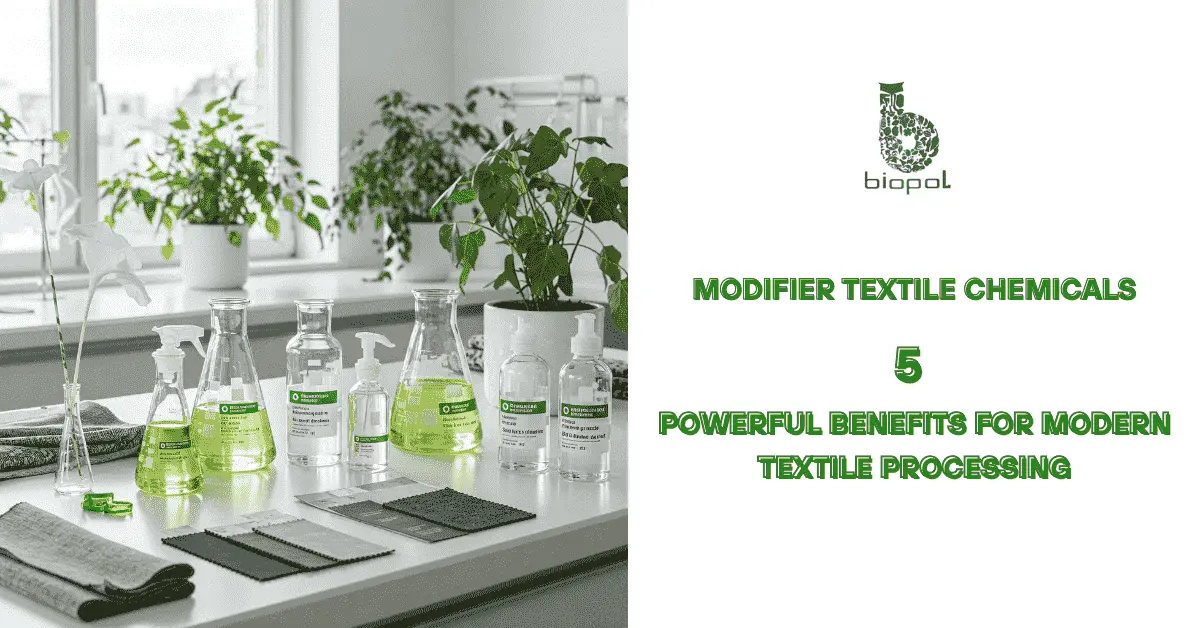
Chemical finishing of textiles plays a vital role in enhancing fabric properties for better performance, durability, and aesthetics. This article explores key processes, finish types, applications, and how to choose the right partner to optimize textile quality and meet industry demands.
Table of Contents
Post-Weave Processes Uncovered
Chemical finishing of textiles starts only after the fabric leaves the loom—but what comes in between? Quite a bit. Desizing, scouring, bleaching, and heat-setting prepare fabric for its final transformation. These steps clean, stabilize, and strengthen.
Without this groundwork, chemical finishing of textiles would falter—performance would suffer, durability would drop. These aren’t optional extras; they’re essential for making fabric fit for real use. Behind every smooth shirt or water-resistant jacket lies a process few ever see, but every textile depends on.
Chemical Finishing of Textiles Explained
Chemical finishing of textiles refers to the controlled application of chemical agents that modify a fabric’s properties without changing its structure. The goal? Performance, comfort, and market readiness.
From softening rough fibers to adding flame resistance or water repellency, chemical finishing of textiles fine-tunes the fabric’s behavior. It turns functional fabrics into commercial products—smooth, stable, and fit for end-use.
Without this stage, even high-quality weaves can fall flat. It’s not just enhancement—it’s necessity dressed as chemistry.
Key Finish Types: Soft, Dry, Durable
Chemical finishing of textiles covers a broad range of treatments, each serving a distinct function. Most finishes fall into three practical categories—soft, dry, and durable.
- Soft Finishes: Improve hand feel; commonly used in apparel. Think silicone or polyethylene-based softeners.
- Dry Finishes: Add crispness or stiffness to fabrics like collars or curtains. Resin treatments are typical here.
- Durable Finishes: Designed to last through repeated washes—flame retardants, wrinkle resistance, and water repellents.
Chemical finishing of textiles isn’t one-size-fits-all. Each finish serves a job. Each job demands precision.
Coatings vs Surface Treatments
Chemical finishing of textiles involves both coatings and surface treatments, but what sets them apart? Coatings form a distinct layer on the fabric’s surface, often visible and tactile. They provide barrier properties—like waterproofing or UV protection—by physically covering fibers.
Surface treatments, on the other hand, chemically alter the fiber surface without adding a separate layer. These treatments improve dye uptake, softness, or wrinkle resistance by changing the fabric’s chemistry at a microscopic level.
Understanding these differences helps in selecting the right finishing method to meet performance goals efficiently. Both are vital tools in the chemical finishing of textiles toolbox.
Top Use Cases: Apparel to Interiors
Chemical finishing of textiles spans diverse industries, enhancing fabrics for varied demands. In apparel, finishes like wrinkle resistance and moisture management improve comfort and durability. Sportswear relies heavily on water repellency and breathability treatments.
Home textiles benefit too—curtains often receive flame-retardant finishes, while upholstery gains stain resistance. Technical textiles use chemical finishing for oil repellency and antimicrobial properties.
Across sectors, chemical finishing of textiles transforms basic fabric into purpose-driven materials tailored for specific environments and uses. The range is broad, but the goal remains clear: performance meets practicality.
Performance Gains: Color, Wrinkle, Fire
Chemical finishing of textiles delivers crucial performance upgrades that buyers demand. Colorfastness treatments keep fabrics vibrant, resisting fading from sunlight or washing. Wrinkle-resistant finishes reduce ironing time and maintain a crisp look throughout the day. Flame retardant finishes protect users and meet strict safety regulations, especially in upholstery and workwear.
These enhancements aren’t mere perks—they directly impact product value and customer satisfaction. In competitive markets, chemical finishing of textiles can be the difference between average fabric and a premium, trusted product.
Eco Finishes & Global Standards
Chemical finishing of textiles is increasingly shaped by environmental concerns and regulations. Eco-friendly finishes use biodegradable or less toxic chemicals to reduce pollution and health risks. Water-based and solvent-free treatments are gaining traction, minimizing harmful emissions.
Global standards like OEKO-TEX® and REACH set strict limits on chemical residues, pushing manufacturers toward safer practices. Compliance isn’t optional—it’s a business imperative. Sustainable chemical finishing of textiles balances performance with responsibility, answering the call for greener, cleaner fabrics without compromise.
How to Choose a Finishing Partner
Selecting the appropriate partner for chemical finishing is paramount to product quality. Key considerations include:
- Technical Expertise: The partner should possess in-depth knowledge of various finishing processes and chemistries.
- Compliance with Safety Standards: Ensure adherence to global environmental and safety regulations.
- Customization Capabilities: The ability to tailor finishes to specific fabric needs is crucial.
- Transparency: Look for partners who are transparent about chemical sourcing and environmental impact, providing clear documentation and certifications.
- Turnaround Times and Customer Support: Efficient processing and responsive service are as important as the chemical treatments themselves.
A wise choice in a finishing partner ensures consistent, high-quality results that bolster brand reputation and product performance. This critical step should not be underestimated.
A finishing partner’s chemical expertise is critical. For insight into the chemical varieties they work with, see our guide on the types of textile chemicals.
Get Started with Smarter Finishing
Chemical finishing of textiles holds the key to elevating fabric performance and market appeal. Ready to transform your textiles with advanced finishes that meet today’s standards? Partner with experienced professionals who combine innovation and compliance.
Request a consultation or sample trial to experience firsthand how chemical finishing of textiles can enhance your products. Taking this step could be the smartest move for quality, durability, and customer satisfaction—why wait to make your fabrics stand out?
FAQs: Chemical Finishing of Textiles
What is the chemical finishing process?
The chemical finishing process involves applying chemical agents to textiles to improve properties like softness, durability, water repellency, and flame resistance.
What is the chemical process in textiles?
It refers to treatments that modify fabric behavior through chemical reactions, enhancing performance without altering the fabric’s basic structure.
What are the methods of finishing in textiles?
Common methods include coating, padding, exhaustion, spraying, and curing, each applying chemicals differently to achieve desired fabric effects.

